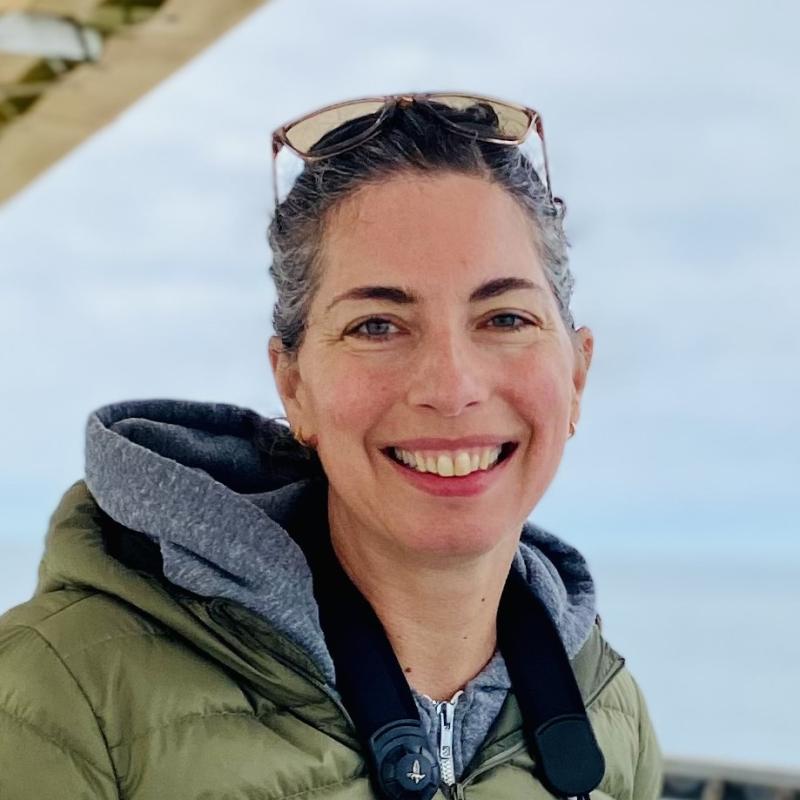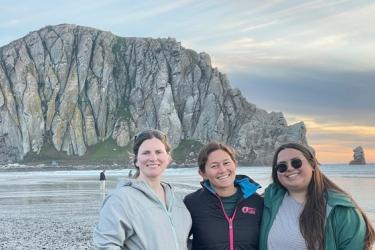The NOAA Ship Bell M. Shimada came into port in Newport, Oregon on Wednesday July 19 for a science crew change and left the dock to resume science operations on July 23. The ship’s crew, along with some new scientists joining the survey and a few scientists that stayed on from Leg 2, are all very excited to get back out to the open ocean and continue the important science of the Survey.
Another NOAA Teacher At Sea (TAS) joined the science party on this leg, replacing TAS Lisa Carlson from Leg 2. Lisa wrote some excellent blogs about many of the different aspects of the Survey, and even got to interview some of the crew, providing excellent insight into careers at sea. Leg 3’s Teacher at Sea is Jenny Gapp, a school librarian at Peninsula Elementary in Portland, OR who will also be updating her blog about her experience!
Science operations resumed just south of Cape Mendocino, California. This area is notorious for strong northwesterly winds, which are very important in supporting coastal upwelling and a productive California Current Ecosystem with plankton and fish that support Pacific hake populations. However, the winds can make the seas quite choppy, with large swells that make vessels, including the large Shimada, feel like a roller coaster. Luckily there are plenty of sea sickness remedies on board for those scientists who need it (seasickness can happen to anyone!).
Scientists continue to collect acoustic and biological data to estimate the biomass of Pacific hake off the west coast of the U.S. and Canada. Starting on Leg 3, we will also be conducting standardized surveys for marine mammals and seabirds with collaborators from Oregon State University. The Shimada has an expansive flying bridge that offers excellent views of the ocean all the way out to the horizon, perfect for sighting whales, dolphins, and albatross. Stay tuned for updates on what the observers see!




